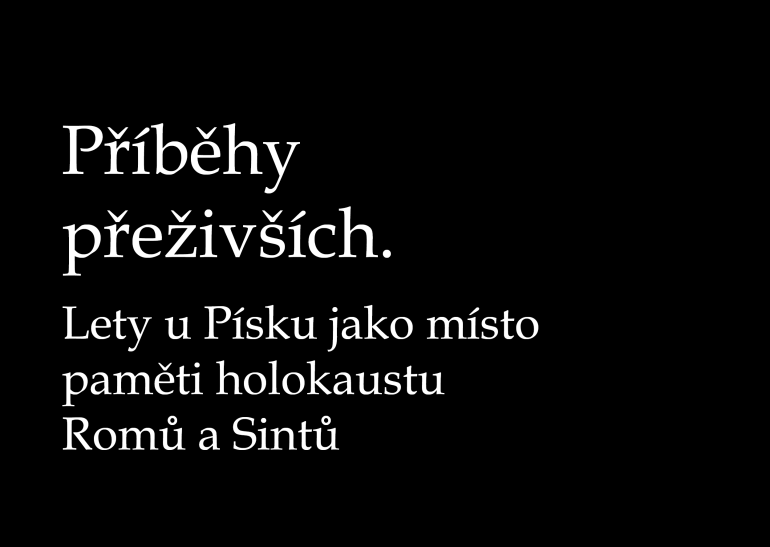The stories and faces of six Roma and Sinti survivors of the Holocaust, from the concentration camp in Lety u Pisku, south Bohemia, are presented at an exhibition at the Clam-Gallas Palace in Prague, which was opened to journalists yesterday.
The exhibition wants to avoid the impersonal language of numbers and photographs of impoverished people taken by the Nazis; instead, it presents the concrete human fates of six prisoners from Lety, through authentic family photographs and audio recordings of memories.
The original diary of Josef Serinek, who escaped from the camp and became a partisan during WWII, will be exhibited for the first time, alongside other personal items associated with the survivors.
The exhibition is open to the public from today until 30 June.
“We have focused on the human dimension of this history,” said Jiri Smlsal, the exhibition’s curator. “We want to present the faces and stories of people who were interned in the so-called Gypsy camp because of their origin, and who should have been murdered like most of their friends and relatives, but survived against all odds.”
The exhibition, entitled “Stories of Survivors: Lety u Pisku as a Place of Memory of the Holocaust of the Roma and Sinti”, is dedicated to Bozena Ruzickova, Zilla Schmidt, Bozena Pflegerova, Antonin Studeny, Josef Lagryn and Josef Serinek.
“The exhibition shows the dimension of their human suffering, which many of the leading politicians of our state downplayed by saying that Lety was just a labour camp. It was not, it was in fact a concentration camp, and the stories of our six heroes prove it,” said Jana Horvathova, director of the Museum of Roma Culture.
According to the exhibition creators from the Roma and Sinti Centre in Prague, the fates of the six personalities are unique as they gave testimony about the suffering they endured, kept photographs of their lost loved ones, conducted interviews with historians, and elaborated their memories in literature. Audio versions of the memories are available in Czech, English and Roma.
The forced labour camp in Lety u Pisku was opened in 1940. A similar facility existed in Hodonin near Kunstat, south Moravia. In 1942, both facilities turned into internment camps, and in August of the same year, Roma camps were established there. By May 1943, 1,308 Roma men, women and children had been interned there, of whom 327 perished in the camp and over 500 were sent to the extermination camp in Auschwitz, where most of them died. According to estimates, the Nazis murdered 90% of Czech Roma people.
Under the communist regime in the 1970s, a pig farm was built at the site of the camp. The Czech state purchased the farm in 2018 for CZK 450 million from the Agpi company, which kept 13,000 pigs there.
Now, a memorial at the site to the Holocaust of the Roma and Sinti in the Czech Republic is in the process of being completed, and will be opened by the Museum of Roma Culture on 12 May. On this day, a commemorative act is traditionally held at the provisional cemetery, situated some 300 metres away from the camp’s former site.






